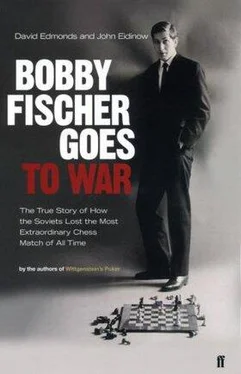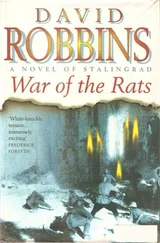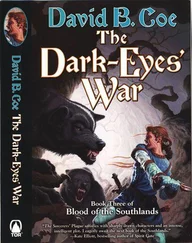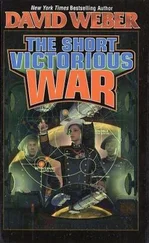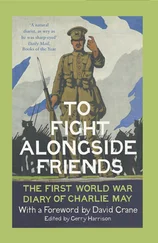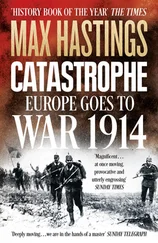The text is signed:
Robert D. James (professionally known as Robert J. Fischer or Bobby Fischer, the World Chess Champion)
After this, “Robert J. Fischer, the World Chess Champion,” became a wanderer. For a time in the mid-1980s, he lived in Germany. Michael Bezold, then just a schoolboy but later a grandmaster, analyzed with him each day for three months. Fischer was still a nocturnal animal, rising in the afternoon and often eating a huge breakfast of cereal and eggs and bread at five P.M. He was obsessed with “a game in the 1960s, and the question was whether or not to move the pawn to h6. This was the only question. And he said he’d been analyzing this game for more than thirty years, and he couldn’t figure out whether it’s better to play h6 or not. It was fantastic.”
Then suddenly the recluse resurfaced for all the world to see. In 1992, in the midst of the Yugoslav war, exactly two decades after their encounter in Reykjavik, Spassky and Fischer met in a rematch. It was organized by Jezdimir Vasiljevic, a Serbian financier of dubious repute, who proffered $5 million of his bank’s money (two-thirds to go to the winner, one-third to the loser) to entice the ex-champions back to the board. Once again, the world’s press assembled en masse, tantalized not only by the prospect of a battle between the two old foes, but by a sighting of Fischer. What would he look like after all these years?
The answer was, totally transformed from the lithe, boyish figure he had presented in Reykjavik. Now forty-nine, balding, pudgy, and with a beard mottled the same shade of gray as his suit, he had the air of a university lecturer. Fischer considered this a “World Championship” contest—absurdly, given that he had forfeited the title seventeen years earlier and Spassky was now rated only about one hundredth in the world.
The match, split between Belgrade and the picturesque island resort of Sveti Stefan in Montenegro on the Adriatic Sea, was in many ways a triumph for Fischer’s obduracy (as well as his principles), for the rules were those upon which Fischer had insisted in 1974 in the negotiations with FIDE. But his taking part in the match in the middle of the Yugoslav civil war breached UN sanctions: the U.S. Treasury Department bluntly informed him beforehand that he would be in violation of an executive order (number 12810) if the match went ahead—a serious crime carrying a heavy fine and/or a jail sentence.
He ignored the warning. In a press conference, Fischer opened his brown leather suitcase and removed a letter from the Treasury Department. He then spat at it, with precision. Asked about the then top two players in the world, Karpov and Kasparov, he described them as “the lowest dogs around.” A U.S. arrest warrant was later issued—it is still valid.
For admirers of the two champions, the rematch was an unedifying spectacle, rather like the sight of two former heavyweight boxers, well past their prime, climbing back into the ring for a last big payday. After game one, the experts were in a state of high excitement—Fischer had won it brilliantly: he looked like the Fischer of old. But it was a form he was to regain in only a couple of games. Although he won convincingly, ten games to Spassky’s five, with fifteen draws, the quality of the chess was regarded as somewhat pedestrian. An immensely profitable few weeks for the two adversaries, the episode tarnished the Reykjavik legend as a bad sequel to a movie can sully the original.
Then the nomad was off again. Zita Rajcsanyi, a nineteen-year-old Hungarian chess star, had been instrumental in drawing him into the Spassky rematch and had kept him company in Yugoslavia. But although Fischer spent several years in Budapest in the 1990s, Rajcsanyi married and disappeared from the scene. At some stage, Fischer moved to Tokyo. There are reports of his having a child. Sightings of him became as rare and often no more accurate than those of the Loch Ness monster.
Fischer has descended into an abyss of unreality, the world of Holocaust denial, persecution complexes, and conspiracy theories. In the 1980s he became fixated on the study of anti-Semitic tracts, such as the Tsarist forgery The Protocols of the Elders of Zion and Hitler’s manifesto, Mein Kampf. In the late 1990s, he broadcast occasional interviews, though he performed only on condition that they went out live. This was a risky proposition for station chiefs: Fischer railed about the Jews, usually referring to them as kikes, Jew-bastards, or Yids. He told those with whom he retained any kind of contact that he had a mission to tell the truth. “It’s a dirty job, but somebody has to do it. Huh!” As for the attacks on the Pentagon and the World Trade Center on 11 September 2001, “Well, America got what it deserved.” That very day, on Philippine radio, he shouted, “Death to the U.S.A.!” (The USCF subsequently passed a motion condemning their only world champion.) An anticommunism had somehow transmuted into an anti-Americanism. In an interview with Icelandic radio, he recommended the country break with the United States and shut down the Keflavik air base. His e-mail address in Japan was us_is_shit.
Fischer’s mother and sister have died. His mother took to the grave an astonishing secret: Her son’s biological father was not her ex-husband, Gerhardt, but a Hungarian-born physicist, Paul Nemenyi, which whom she began an affair in 1942. Against Nemenyi’s wishes, Bobby was never told what the U.S. government must have known. For a quarter of a century, as Bobby was growing up, the FBI tracked Regina closely, suspecting her of being a communist agent. They documented every detail of her life: her political affiliations, her contacts, her movements. They investigated her telephone records and bank account details; they interviewed her neighbors and work colleagues. Dozens of special agents were involved, and scores of informers serviced them with information. Many of the FBI memos are from or to the then director of the FBI, J. Edgar Hoover. Given Bobby’s anti-Semitic and anticommunist obsessions, there is a poignant irony to the fact that his parents were communist sympathizers and that he is ethnically Jewish on both sides of his true parentage. [1] See appendix for the full story of the files.
Does he still play? With the advent of Internet chess, Fischer gossip began to circulate with ever-increasing velocity within the international chess community. On the Internet, many players—especially grandmasters—adopt a pseudonym as their “handle,” their Internet name. One reason for this practice is to prevent potential opponents from studying their games and detecting within them certain structures and patterns. There have been insistent tales of Fischer himself dabbling in cyberspace. An astoundingly successful “handle” is observed smashing opponents with consummate ease and the cyberwhispering begins: “Fischer is back.” The remarkable readiness with which these stories are embraced is akin to the eager anticipation of religious cult members awaiting a second coming. With his disappearance, the Fischer mystique has become part of chess lore, captured, for example, in the Hollywood film Searching for Bobby Fischer, about a father’s relationship with his talented son and the pressures of being compared to the former champion.
He invented a clock, the Fischer clock, the principal idea of which has rapidly gained currency in the chess community. Like many of Fischer’s proposals, its aim is to strip chess of risk as far as possible so that it is the better player who ultimately wins. With the conventional clock, a situation can occur in which a player has only one minute on the clock to make, say, ten moves—in such circumstances silly slip-ups are quite common. On the Fischer clock, each time a player makes a move, he or she is given more time. For instance, the clock may be set to give the mover an extra two minutes after every move. A mad time scramble is thus avoided.
Читать дальше
